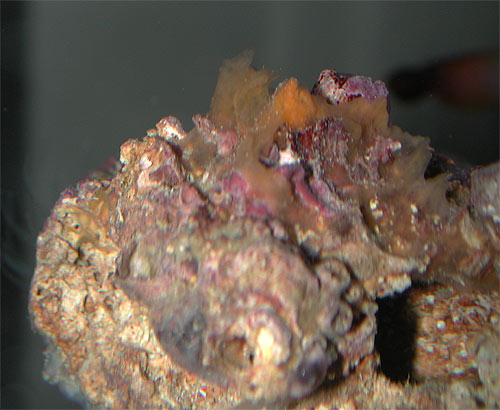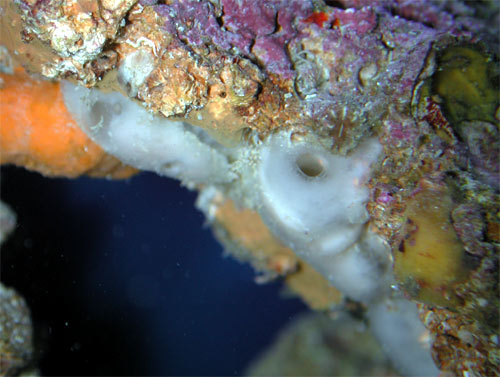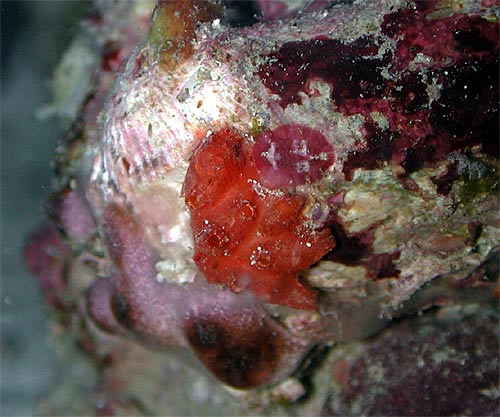Danger Doll mentioned squirts in a thread in Chit Chat area. I figured I'd post my pics here for the sake of discussion. Some of the local reefers here call them sponges, others call them squirts. For all I know they might even be several very different things. What they have in common is is kind of soft mass with small tube shaped openings. The ones I have are different colors. Black, brown, purple, white, yellow, red and bright orange. All came on my local LR. Some died off, others are growing and slowly spreading. These shots are from in my Nano, now set up for about 7 weeks.










